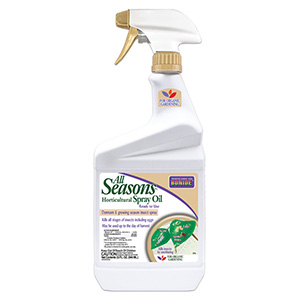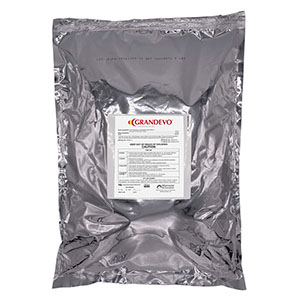Russet Mites
Russet Mites, along with Hemp Russet Mites, are some of the most damaging and difficult to control pests affecting growers today. Many species are host-specific and prefer monocultured growing areas (tomato growers in particular). Hard to spot and quick to reproduce, russet mites do not produce the noticeable webbing that identifies spider mites. Members of the Eriophyidae family of mites, they typically move in without being noticed and can build a large population before damage symptoms are evident. Their minute size allows them to hitch rides to new areas on clothing, in removed debris and even on other pest insects like whiteflies and aphids making sanitation imperative in infested areas. Warm, dry, windless conditions encourage mite populations to grow more rapidly, but they will target plant growth where conditions provide shelter and humidity.
Life Cycle & Appearance:
Russet mites lay clear, round eggs in the spring. Following the egg's hatching, russet mites go through two developmental nymph stages, which resemble adults. Developmental time varies from 8-15 days based on environmental conditions. Adults are tiny and wedge-shaped, appearing yellow when clustered. They differ from many other mite species in that they only have two pairs of legs. Females overwinter inside the stems of affected plants as well as at plant joints.
Damage:
Russet mite damage usually presents itself at the bottom of the plant and moves upwards as the mite population does. It begins with yellowing leaves (chlorosis) and leaf curl ("taco-ing"), which is often mistaken for a nutrient or water deficiency. Continued russet mite damage will reduce the plant's vigor, overall health, new growth and flowering making control all the more important. Once a population is established the mites will move onto all parts of the plant including flowers and blossoms. Over time, russet mite feeding has a severe impact on bud and flower production throughout a grow making preventative control and early treatment the most economically viable treatment methods.
Controlling Russet Mites:
| Treatment | Vegetative Stage | Flowering Stage |
| Sanitation: remove debris, maintain irrigation, support beneficial insect populations | Yes | Yes |
| Green Cleaner | Yes | No |
| Sulfur Dust/Spray | Yes | No |
| Azadirachtin Sprays: Azera Gardening, AzaGuard, Molt-X | Yes | No |
| PureCrop 1 | Yes | Yes |
| Oil-Based Sprays: SuffOil-X, JMS Stylet Oil, Monterey Horticultural Oil | Yes | No |
| Neoseiulus californicus: 50-105°F, 40-60% RH | Yes | Yes |
| Amblyseius andersoni: 42-100°F, >50% RH | Yes | Yes |
| Amblyseius swirskii: 77-85°F, ~70% RH (remain active to 60°F) | Yes | Yes |
| Amblyseius cucumeris: 66-80°F, 65-72% RH | Yes | Yes |
| Galendromus occidentalis: 80-110°F, >30% RH | Yes | Yes |
The recommendations shown above are commonly used controls for russet mite infestations. More control options can be found below. If you have questions about how to use a given product, how to release predatory mites, or how to implement an Integrated Pest Management approach to control, please call us at 1-800-827-2847 and our IPM specialists can help you.
PLEASE NOTE: All Mite Predators require additional processing time due to rearing and collection times. Please make note of the information in red at the top of each mite predator page and in the Shipping Tab to identify the earliest shipment date. If you have questions about shipment dates, orders can be placed with our sales representatives at 1-800-827-2847.
-
$140.00–$720.00
-
$30.00–$200.00
-
$68.00–$500.00
-
$35.00–$400.00
-
$38.50–$142.00
-
$60.00–$500.00
-
$38.00–$240.00
-
$43.00–$128.00
-
$25.00–$600.00
-
$80.00–$750.00
-
$21.00–$130.00
-
$21.99
-
$38.35–$150.08
-
$275.00–$2,495.00
-
-
$16.49–$26.99
-
$9.49–$17.00
-
-
-
-
-
$15.95
-
$73.80–$3,005.00
-
$40.00–$140.00
-
$162.00–$500.00
-
$11.99–$299.99
-
$12.99–$139.99
-
$12.99–$139.99
$12.99–$99.00 -
$149.00–$1,149.00
-
$350.00–$975.00
-
$10.99–$32.49
$6.00–$32.49 -
$67.78–$2,169.50
-
$38.50–$4,350.00
-
$280.00
-
$35.00–$350.00
-
$35.00–$285.00
-
$90.00–$710.00
-
$22.99–$131.95
-
$58.00–$260.00









































